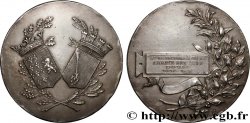Live auction - brm_434678 - PACATIAN Antoninien
You must signin and be an approved bidder to bid, LOGIN TO BID. Accounts are subject to approval and the approval process takes place within 48 hours. Do not wait until the day a sale closes to register. Clicking on "BID" constitutes acceptance of the terms of use of cgb.fr private live auctions.
Bids must be placed in whole Euro amounts only. The sale will start closing at the time stated on the item description; any bids received at the site after the closing time will not be executed. Transmission times may vary and bids could be rejected if you wait until the last second. For further information check the Live auction FAQ
All winning bids are subject to a 18% buyer’s fee.
All winning bids are subject to a 18% buyer’s fee.
| Estimate : | 4 500 € |
| Price : | no bid |
| Maximum bid : | no bid |
| End of the sale : | 12 September 2017 14:57:45 |
Type : Antoninien
Date: c. 249
Mint name / Town : Viminacium
Metal : billon
Diameter : 22 mm
Orientation dies : 12 h.
Weight : 3,93 g.
Rarity : R3
Coments on the condition:
Exemplaire sur un flan ovale et irrégulier bien centré des deux côtés à l’usure très importante, parfaitement lisible et identifiable. Frappe faible sur le portrait. Revers bien venu à la frappe. Patine de collection ancienne
Catalogue references :
Obverse
Obverse legend : IMP TI CL MAR PACATIANVS AVG.
Obverse description : Buste radié, drapé et cuirassé de Pacatien à droite, vu de trois quarts en arrière (A2).
Obverse translation : “Imperator Tiberius Claudius Marinus Pacatianus Augustus” (L’empereur Tibère Claude Marin Pacatien auguste).
Reverse
Reverse legend : PAX - A-ETERNA.
Reverse description : Pax (la Paix) drapée debout à gauche tenant une branche d’olivier de la main droite et un sceptre transversal de la main gauche.
Reverse translation : “Pax Æterna” (la Paix éternelle).
Commentary
Exemplaire de mêmes coins que l’exemplaire de la vente Lanz 159, n° 547. Rubans de type 3. Cuirasse à peine visible sous le paludamentum. Sur cet exemplaire, les traces de surfrappe sont peu visibles en raison de l’état de conservation de l’exemplaire.








 Report a mistake
Report a mistake Print the page
Print the page Share my selection
Share my selection Ask a question
Ask a question Consign / sell
Consign / sell










